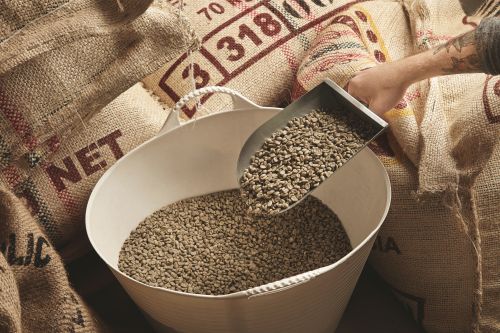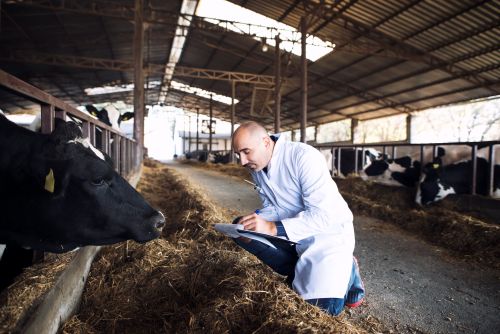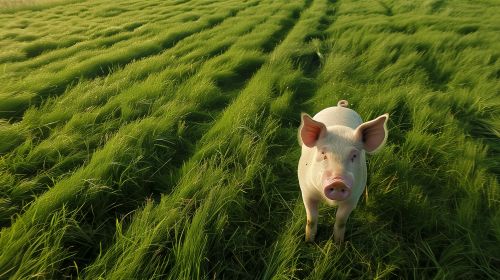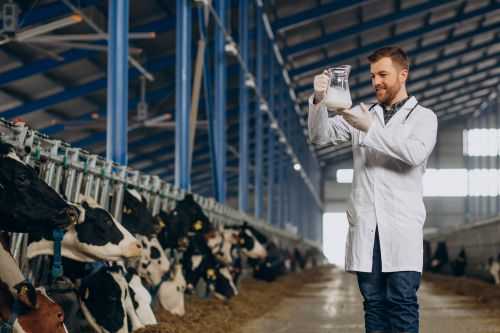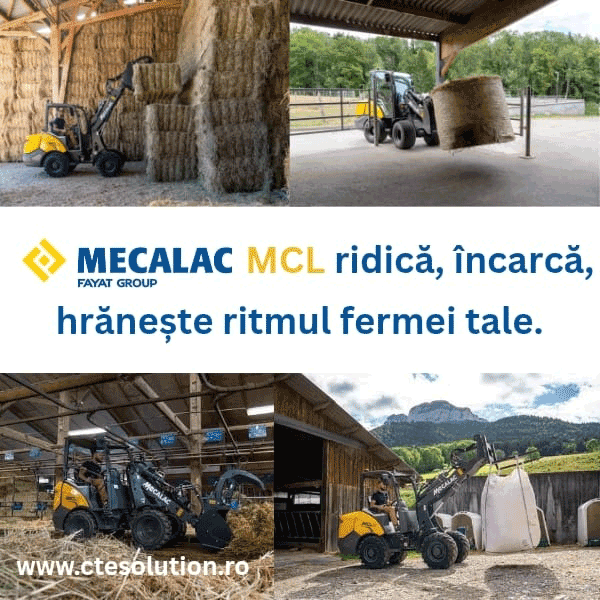1024

Agriculture, as a cultural value, determines, among other things, how people see the world, including how they connect the visible and the invisible, but especially pertains to the preservation of traditional environments.
Thus arises the idea that people interact with each other and with their environments. Consequently, culture shapes and justifies behavior, human interactions, and collective identity, including those related to the production, processing, acquisition of food, water, and their consumption.
Therefore, traditional agriculture is a means of cultural conservation, an important anchor in an increasingly chaotic situation in the world of globalization and climate change. When traditional agriculture is destroyed, so are culture and the relationship people have with the land and with each other.
Socially, justice is denied when traditional agriculture and the societies that support it are destroyed in the name of progress, as shown in the excellent work titled "Preservation of Cultures in Traditional Agriculture," developed by the University of Kansas.
Cultural Capital and Traditional Agriculture
Traditional agriculture evolved along with the people who practiced it in various ecosystems, contributing to human health in terms of food and diet. Food and the ceremonies around it are an important part of traditional agriculture and the well-being of the groups that practice it.
Cultural capital links what is seen and unseen. In some countries, it is called worldview or Weltanschauung. In Hispanic America, it is best termed "cosmovision." This includes symbols, a sense of place (or lack thereof), ways of knowing, language and history, ways of acting between what is and what is believed can be changed.
A careful awareness of the land and its characteristics (WinklerPrins and Barrera-Bassols, 2014) was part of the cultural framework of precolonial societies in Mesoamerica (Barrera-Bassols et al., 2016), as well as in other parts of the world. Rituals and ceremonies honored the Earth and human attention to it (Bolin, 2018).
However, colonization separated cultural capital from agriculture, separating people from the land and from each other. The cultures of traditional farmers define how they relate to each other, to the ecosystem, and to what and how they produce and consume.
In turn, hegemony is the ability of one group to impose its culture, beliefs about what should be and what is possible to change, onto others. Thus, for dominant cultures, their values reinforce the primacy of increasing production to generate money, and other values are seen as sentimentalism and a blockage to progress.
Translation into Law
These hegemonic values are then translated into laws that often deprive people of their land (Alden Wiley, 2022). For smallholders, especially, cultural capital includes how soil and water are classified, the uses for which they are considered most suitable, and the things that must be done to maintain their fertility and purity, including terraces, crop rotations, soil amendments, or, why not, ethnocultural aspects.
The cultural aspects of soil and water maintenance were inseparable in traditional agriculture and pastoralism. Some smallholders, often members of specific ethnicities, have been in one place for hundreds of years to develop a culture of the land and water and how to use them.
They classify and protect soils and water sources based on observation and generational experience (Williams, 2015). Other smallholders are driven to marginal lands, as miners (including oil exploration), and industrial agriculture forces them to leave their ancestral lands.
Especially as smallholders have moved to marginal lands, few believe they can do much to improve the soil on their new, often degraded land. They might seek to cultivate crops they traditionally grew, regardless of whether they are adapted to the new ecosystem or not.
The Risk of New Settings
However, practices that worked in the context from which they came are often not transferable to the new setting. They do not understand the local hydrology or the seasonal variations in rainfall that are different from where they come from, where plants of human interest grow (Rengifo, 2004).
Additionally, cultural heritage is not defined and delineated only by people, but also by nature and gods. Traditional culture serves multiple purposes in human livelihoods, serving not only to reproduce the human body through food production but also collective identity in the reproduction of spirituality.
Rengifo (2014) identified three important cultural aspects of traditional agricultural cultivation:
1. The relationship between cultivators and their crops is personal.
2. Agricultural practices are performed as rituals.
3. A fine and detailed conversation with nature is necessary to undertake agricultural work at the right time, in the appropriate place, and in an adequate manner.
Revilla (2016) shows that effect is more important than rationality, communal feeling predominates over individualism, and people continue to be part of nature rather than trying to control it. For example, in 1990 there were over 460 different ethnic groups in Latin America that still managed local ecosystems with indigenous technologies (Altieri and Hecht, 1990).
Ethnoecological Knowledge
The elements of ethnoecological knowledge in some of these groups are impressive. For example, the Maya recognize approximately 908 botanical toxins, and the Huastecos, in Mexico, about 861 (Toledo, 2022). This indigenous knowledge has led to management systems now considered sustainable and thus suitable to guide modern resource management.
Traditionally sustainable, existing agricultural systems include small rectangular plots of fertile arable land to grow crops on the Andean altiplano and in the agroforestry systems of several Amazonian tribes.
These small landholders use a highly diverse and traditional management system for water, soil, pests, and vegetation, which includes composting, rotations, polycultures, agroforestry, and watershed management systems (Altieri, 1987; Wilken, 1987; Altieri and Masera, 2013).
Similar intersections of culture and micro-ecosystems occur around the world. For example, in the oasis agriculture of North Africa, pastoralism combined with intensive vegetable and fruit production is carried out only on the most fertile land (Ilahiane, 2004). Such cultural and agricultural systems have evolved according to environmental conditions that are often specific, ethnically, and determined by notions of community and change (Ilahiane, 2009).
Minimizing Risks
Most traditional agricultural systems seek to minimize risks, both in the long and short term (Rist and San Martin, 2013). In many steep regions, traditionally cultivated households at different altitudes are adapted to the specific soil and climate conditions necessary for optimal production over time.
However, the transition to land privatization (usually done by titling neighboring plots of land) and large machinery have made such soil protection strategies socially difficult and mechanically impossible, as traditional plots were small and intensively cultivated.
Diversification and verticality have been diminished by modernization projects. Such practices have been stigmatized or considered outdated, causing the loss of extremely valuable knowledge needed for soil quality preservation.
Gender Division
Moreover, the gender division of labor is an important part of small farmers, although those traditions are challenged as more men migrate to seek wage labor. Traditionally, men and women perform separate tasks within the same system, suggesting that each gender can appreciate and improve different aspects of soil quality.
Often, men in small households are responsible for plowing, women handle seed selection, both genders do planting and harvesting, men carry out post-harvest fieldwork, and women process after harvesting.
In small African farms, there are crops for women (usually for household consumption or local sale) and for men (generally for a broader market).
A major component of social capital, reinforced by cultural capital, is reciprocity. In many communities, reciprocity is not just individual reciprocity. Reciprocity has different forms related to space, time, energy, and mass.
There are various types of group or individual reciprocity:
- Work for a product,
- Work for labor, and
- Work for food and celebration.
Although in some reciprocity, it is individual to individual, in others it means that the group will act to support the group based on mutual commitment or that the individual will give to the group when needed, understanding that they will receive help when they need it.
The form of reciprocity in peasant communities has three categories of reciprocity:
- Harvesting agricultural products,
- Soil conservation and in rituals, festivals, and
- Kinship relationships.
Other Forms of Reciprocity
Another form of reciprocity shares daily household work and tools. This tends to be more individual reciprocity, generally among blood or fictive relatives.
Reciprocity involves providing a service in exchange for a similar service, food, or product through labor. All these forms of reciprocity depend on cultural capital and traditional agricultural patterns.
The timing of complex crop rotations was very important in the precolonial era. Festivals and rituals marked the beginning and end of each stage of the agricultural cycle, which also helped ensure family and labor.
In some cultivated areas, these have continued, although climate changes have reduced their coincidence with adequate soil moisture and temperature. As Bolin (2018) shows, soil conservation rituals and other agricultural activities, which still continue in some small farming communities, enhance respect for the land, its products, and community members.
This derives from the fact that the normative principle of precolonial or ancient agriculture was not maximizing production but managing, conserving, and improving soil fertility in the long term, with social relationships formed to meet collective societal needs within the limits of each vernacular ecosystem, were extremely important (Rist and San Martin, 2013). Thus, social and cultural capital were essential for traditional agriculture, for the rituals and ceremonies that supported it.
Relational Skills
Relational skills are important for building social capital. For many smallholders, building relationships with neighbors is part of their cultural capital. It involves mutual trust, as smallholders know they can count on neighbors when reciprocal actions are needed.
Reciprocity is a critical part of this; in some smallholder communities, participation in group work for the community, including building roads and terraces to prevent soil erosion, is essential for each smallholder contributing to maintaining a good collective.
Mutual trust is established when different institutions, as well as individuals, can give and receive. When trust is mutual, and group work exists, a collective identity emerges, and that collective identity can be embedded in the land.
Communal cooperation is necessary for the conservation and reconstruction of degraded soils. Building on existing social capital is critical, as such efforts require considerable collective investment of all community capitals.
Investing in social capital is necessary not only to bring in external knowledge, equipment, and funds but also to help locals recreate what their ancestors did to protect the soil and provide continuous livelihoods. All the above are values of a community's agricultural culture, values that strengthen both communities and local agriculture. (Photo: Dreamstime)
